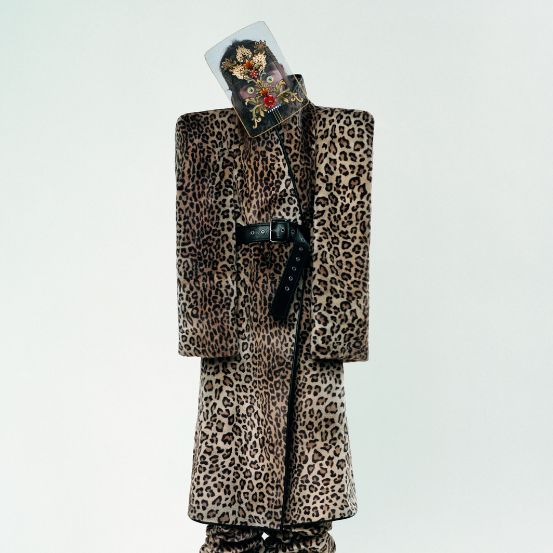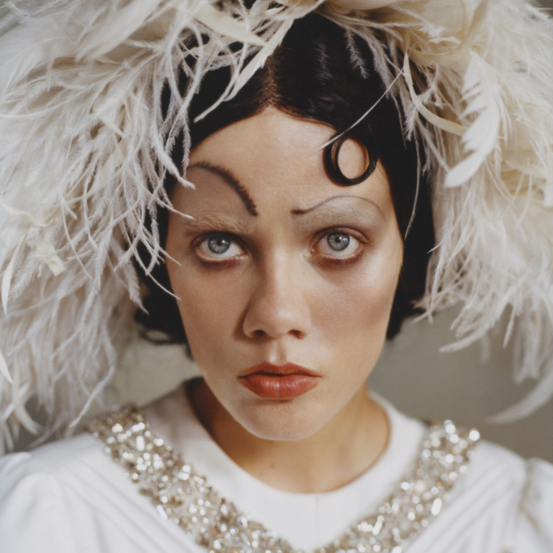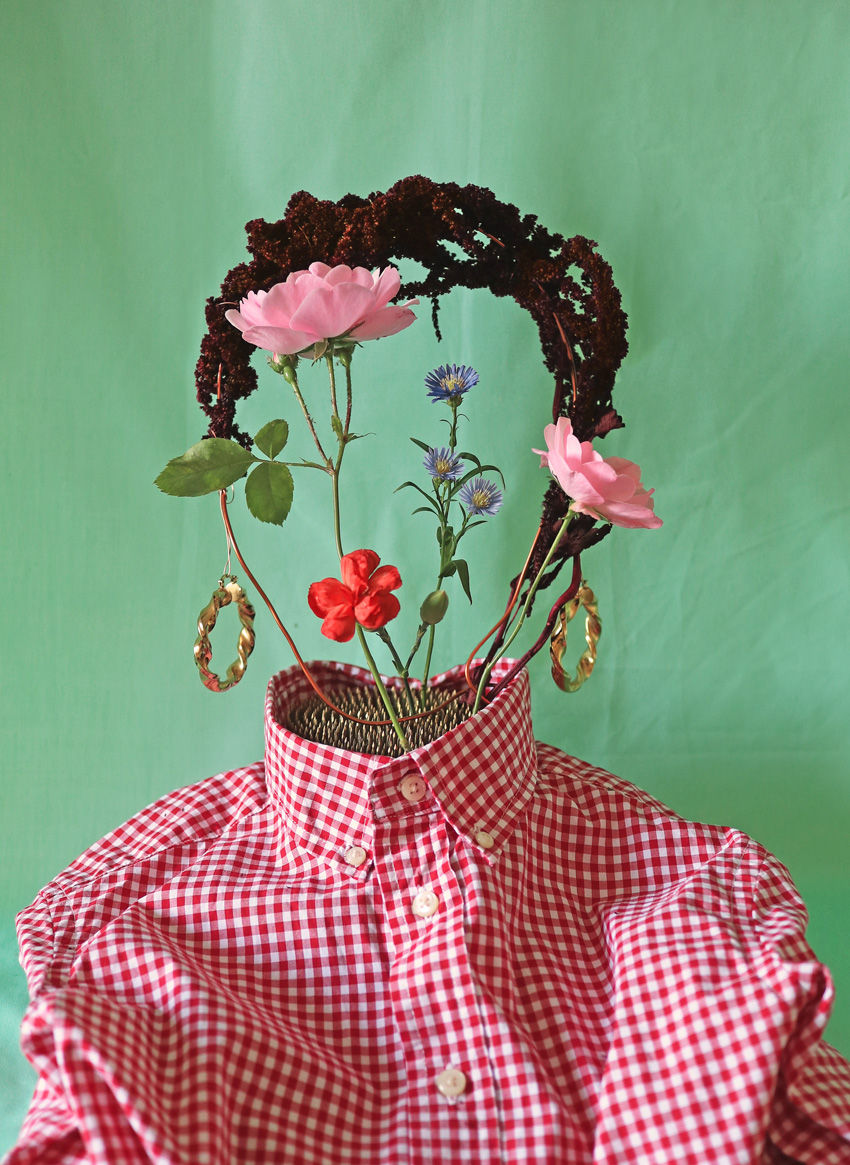The Blossom Issue
Harriet Parry's flowers grow in a garden unlike any other. This is precisely what the Flower Interpretations series, a project that brings together nature, art and creativity, shows us.
“I am an artist who works with flowers - a floral artist.” This is how Harriet Parry, one of London's best-kept secrets, presents herself. “I combine my love of flowers and nature with my background in Fine Arts. I produce playful pieces, conceived; on the whole, as works of art. I work with flowers across various artistic disciplines. Paying close attention to detail, color, texture and composition; with a touch of the unexpected! I would describe my style as colorful and playful, with a dash of humor and wit. I reference both contemporary and historical art [like the Flower Interpretations series, that we see on these pages], fashion, and film, uniting these with the world of floral design.” If you still haven't figured out what Harriet Parry does, imagine the most incredible floral arrangement in the world, just arrived from 2037, and multiply it by two: yes, that's exactly what she does. “I design, create and consult for private clients, companies and brands, or in collaboration with other artists. Collaborating with creatives from different disciplines is something I absolutely love to do. I always say flowers and people make the world go round, so I enjoy creating spaces and designs that are immersive; working with sound artists or visual artists to create another layer of interaction in unison with the floral designs.” Harriet Parry, whose clients include Hermès, Lacoste, Jo Malone and Penhaligon's, is an artist who makes the world go round. And along the way, she lets us peek into her enchanted garden.
What drew you to the floral world? Becoming a floral artist and stylist seemed so natural to me, as flowers and nature have always been a huge part of who I am. I grew up on a farm, surrounded by the countryside and my granny had such a beautiful garden, which always intrigued and fascinated me. She encouraged my love of flowers and creating from a very early age, flower arranging together using her home grown blooms! Alongside my background in Fine Arts and my love of color, floral design felt like a perfect direction. It allowed me to find a home between the art and floristry worlds; a conversation between the two spaces, using nature as my medium – which is an absolute honor to be able to do! Working so closely with nature reminds me of what’s important in life. It opens up a sense of mindfulness, a space away from the continual push and rush of this consumerist world. Taking nature, which is already ephemerally beautiful and making a new piece of art is exciting, an absolute gift. A gift I am so happy to be able to share with others, hopefully bringing joy and escapism for a time.
Are there any types of flowers you prefer to work with? I honestly love working with all flowers! Each variety is unique and there is an exquisite beauty, charm and magic in each one. Flowers speak to us in so many ways, through their color, their shape, their scent. They speak to us on an emotional level. The meanings of certain flowers are also so personal and they can often trigger deeper feelings and emotions. Each flower in a composition can become a vessel to communicate these. So yes, every flower is important and I love being able to give them a stage to bloom! However, I do also look for unusual shapes, lines and patterns in my flowers and foliage that I use. The way a petal may fall or a certain bend in the stem. For me it's all in the little details of the materials. I look at how each stem and bloom hold themselves, and how they interact with the others, as if they are having unheard conversations or experiences with each other. Almost like they are characters in a play or scene! Each individual stem plays an important part in representing and bringing together the overall aesthetic or impression, or meaning of my designs.
How is your creative process? I approach my floral designs as if they are paintings. Thinking of texture, shape, line, color and overall aesthetic. I like to think that flowers are my medium - just as a painter uses their paint on a canvas. I love to use unusual and surprising varieties of flowers and foliage, as well as props, fabrics and objects - Florals and other ingredients that may not always be put together. This adds a really playful element to my work. […] I often have an idea or concept to work towards, which I may have sketched up and planned for; with specifically chosen flower varieties and materials. But within the creative process and the actual putting together of the design, I allow space for experimentation and intuitive creation and making. This for me is where the magic happens. I revel in the flow state of creative expression. I suppose creating is like nature. It has no concerns about how it develops and grows or what it produces - it just is. With that in mind, I try not to over think when I create and just let it flow, see what each piece has to reveal to myself as well as the viewer.”
Is there any tool that is absolutely relevant to your work? I think for me, the most important tool in my creative process and the finished work is that I feel connected with the flowers, materials and the idea itself. As a creative person the way you look at the world, the thoughts and messages you want to convey are carried with you through the work you put out in the world. They are in the fabric of who you are, and they cannot be separated. I also like to work with clients that resonate with my work, and align with my principals and concepts as well as my aesthetics. I only take on projects I feel a connection with. I love working with unusual clients with a fascinating brief and something interesting and fresh to say! For me sustainability is also key. I keep as much as I can. Re-use mechanics and re-use flowers. I try to create something personal out of any leftover flowers from a job. I like repurposing things! I also use a lot of dried flowers. These can be used again and again and have such an ethereal quality to them. I try not to use single use plastics and am always trying to find new sustainable ways to create a piece, continually inventing ways to create and produce work the mechanics aligning with my ideals and moral compass.
Is the digital part of the process, for example, important to you? Although my work begins with materials from the natural world, allowing for mindfulness focus of a world we have perhaps strayed so far from, technology and digital tools are also very important to me. They allow me to keep experimenting, be innovative and express myself and my medium of flowers in new ways, a new perspective and a new visual offering to the viewers. The collaboration between nature and technology combined in a respectful way gives us new ways of seeing; ignites the imagination and elevates further the ephemeral quality of nature and beauty with flowers. Within my flower interpretation series, for example, I create my interpretation, then take my photograph mimicking the angle at which the original art was created and then start on the final step of editing the photo using editing software. I like to mirror the tone, colors etc from the original piece, which is only possible to create in post-production. The use of digital processes is crucial to my series and the production of my art. It is an extension of more classical mediums such as painting or collage. Within my site-specific installations I also love to create spaces and designs that are immersive. Often working with sound artists or visual artists to create another layer to my florals, sitting in unison with the design, uniting nature and technology. By bringing technology and nature together in a piece, it is also a nod to how we can use technology and innovation to help and support nature and our world in the future.
In your Flower Interpretations series, you recreate famous works of art through floral arrangements. What was behind this project? I had the idea for my Flower Interpretation series because I have postcards of art that I love from all the exhibitions I've been to over the years on my kitchen cupboards at home. I was always looking at the paintings, drawings, and photographs and seeing flower varieties within the shapes, lines, and textures. I was seeing the art as floral compositions. This led me to start my series. A personal project that has allowed me complete freedom to express my playfulness, creativity, and imagination. I really enjoy how my love for flowers and nature, and my love for art can be combined. What is created from these two passions is a new expression, something completely new, a new piece of art in its own right. I also love how I get to introduce viewers to new artists, contemporary and classic. I see these works as a collaboration between the flowers, the original artist I am interpreting, and myself. […] I create my flower interpretations by looking at the works of art and seeing flower varieties within the shapes, lines, and textures. I see the art as floral compositions. For each interpretation, I ask myself what flowers and foliage symbolize, represent, or resonate with the image and all the above elements. I either begin by choosing my artwork and then selecting the flowers that speak to me of the textures, colors, shapes, or overall aesthetic of the work. […] Once the flowers are chosen, I would then set up a backdrop of fabric, usually, a color selected from the piece. The backdrop pulls all the elements together in my interpretation. As well as flowers and foliage, I also quite often pull in unusual objects, use floristry paraphernalia or different vases and vessels to give my work an unexpected layer. When putting together my flower interpretation I work intuitively. I do not always represent the exact positioning of all the colors, textures and shapes in each artwork, but look back to the overall feel of the image. This, I find, creates room for my own, as well as the viewer's interpretation of the piece and allows for small floral elements and details to be observed and appreciated in hopefully a very personal and playful way. I then photograph my floral arrangement, mirroring the angle at which the original art was created by the artist. Next, is the final process of editing the photo. Perhaps altering the tone, color, exposure, lightness or shadows etc. to match with the original piece. Allowing them to sit side by side in comparison yet unison with each other.”
What do you want to convey with your work? I would love for people to pause. Study my floral pieces. To share in the wonder of nature and to ultimately create; just for a moment, a sense of stillness in our fast-paced world. I also want each piece to resonate personally with whoever is happening upon it. We all have different experiences and approach artworks through our own lens’. I like to think that my works are nuanced in their meanings and interpretations, some subtle and others more present. I love the narratives and feelings that my work could evoke. A space and conversation between myself, the viewer and the flowers themselves. A collaboration. A tapestry of inspirations and influences, that speaks to each person individually. I want to push boundaries and create something fresh and exciting each time I work on a new creation.
Translated from the original in The Blossom Issue, published March 2024. Full stories and credits in the print version.
Most popular


O que lhe reservam os astros para a semana de 28 de outubro a 3 de novembro
28 Oct 2025
Relacionados







 (4).png)